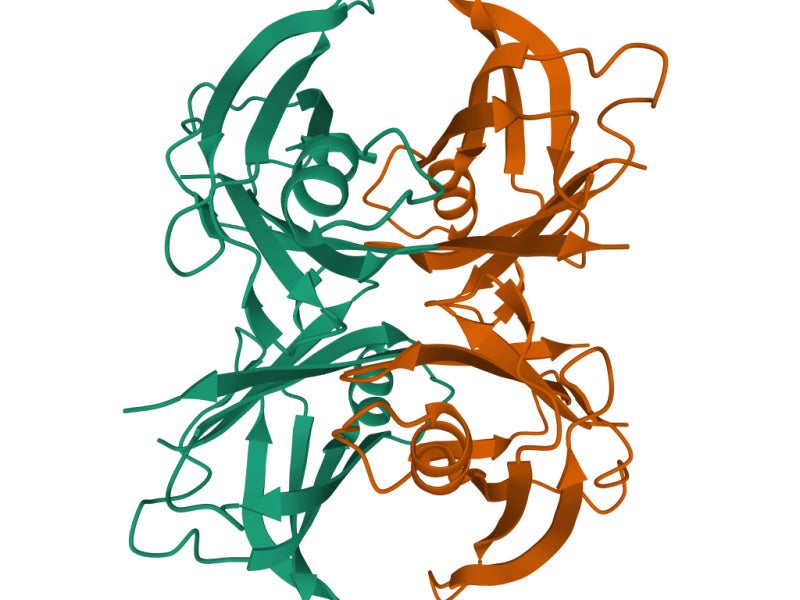WAINUA™ (eplontersen) is a self-administered auto-injector therapy indicated for the treatment of the polyneuropathy of hereditary transthyretin-mediated amyloidosis (hATTR-PN or ATTRv-PN) in adults.
The drug was developed by Ionis Pharmaceuticals, a biotechnology company based in the US.
WAINUA employs Ionis’ advanced LIgand-Conjugated Antisense (LICA) technology to mitigate the production of transthyretin (TTR) protein. The approach is intended for the treatment of ATTR.
In December 2021, Ionis entered a strategic collaboration with UK-based pharmaceutical company AstraZeneca to develop and commercialise eplontersen, formerly known as IONIS-TTR-LRx.
Under the agreement, Ionis is responsible for the manufacturing and supply of eplontersen for ongoing clinical trials and process qualifications while AstraZeneca will manage the commercial supply post-transition. Both companies share responsibility for medical affairs and commercial activities in the US.
Initially, AstraZeneca held an exclusive licence for eplontersen outside the US, except for certain countries in Latin America. The collaboration was extended in July 2023, granting the pharma company exclusive rights to commercialise eplontersen in Latin America.
WAINUA is available as a 45mg/0.8ml clear, colourless-to-yellow solution in a single-dose autoinjector, designed for subcutaneous self-administration.
Regulatory approvals for WAINUA
The US Food and Drug Administration (FDA) granted regulatory approval for WAINUA in December 2023, based on the results from the Phase III NEURO-TTRansform study.
In January 2022, the FDA granted orphan drug designation to eplontersen, recognising the drug’s potential to treat a rare condition and accepted the new drug application (NDA) for review, which was also based on the Phase III NEURO-TTRansform clinical trial results.
Polyneuropathy of hereditary transthyretin-mediated amyloidosis causes and symptoms
Transthyretin amyloidosis (ATTR) is a fatal and progressive systemic disease that affects various tissues and organs such as peripheral nerves, heart, intestinal tract, eyes, kidneys, central nervous system, thyroid, and bone marrow.
The condition leads to the accumulation of transthyretin (TTR) amyloid deposits in various tissues and organs, causing organ failure and potentially leading to death.
WAINUA’s mechanism of action
Eplontersen is a transthyretin-directed antisense oligonucleotide (ASO) designed to reduce the production of TTR protein. It is covalently linked to a ligand containing three N-acetyl galactosamine (GalNAc) residues, which enhances its delivery to hepatocytes.
Eplontersen functions by targeting the TTR mRNA, leading to its degradation and consequently reducing the levels of serum TTR protein and TTR protein deposits in tissues.
Clinical trials on WAINUA
The FDA approval of WAINUA was based on the NEURO-TTRansform Phase III clinical trial, which has been a pivotal study in the evaluation of eplontersen for patients with ATTRv-PN.
The global, open-label, randomised clinical trial has enrolled adult patients diagnosed with stage one or stage two polyneuropathy to assess the efficacy and safety of eplontersen in comparison to an external placebo group from the TEGSEDI® (inotersen) NEURO-TTR registrational trial conducted by Ionis in 2017.
Patients in the trial were randomised to receive eplontersen, which led to an 81.2% mean reduction in the co-primary endpoint of serum TTR concentration from baseline, indicating a significant decrease in TTR protein production.
The co-primary endpoint also included the modified Neuropathy Impairment Score +7 (mNIS+7), which is a measurement for neuropathic disease progression. Eplontersen demonstrated a statistically significant difference in mean change from baseline versus the external placebo group.
Furthermore, the key secondary endpoint of change from baseline in the Norfolk Quality of Life Questionnaire-Diabetic Neuropathy (Norfolk QoL-DN) was met, showing that eplontersen significantly improved patient-reported quality of life compared to the external placebo group.
The final analysis at week 66 compared eplontersen to the external placebo group, with all patients subsequently followed on treatment until week 85. An end-of-trial assessment was conducted four weeks after the last dose. Thereafter, patients had the option to enter an open-label extension study to continue receiving eplontersen every four weeks or to participate in a 20-week post-treatment evaluation period. The findings contribute to the safety and tolerability profile of eplontersen.
The most commonly reported serious adverse events in the clinical trial were decreased levels of vitamin A and instances of vomiting.






